Namibia is arguably one of the most photogenic places in the world. So beautiful, in fact, that photographers come from all over the globe to capture iconic scenes like gemsbok (oryx) among the red dunes, shipwrecks along the Skeleton Coast, and the eerie allure of the Deadvlei.
There are countless locations in Namibia for photographers to explore. Whether you’re a professional shutterbug or an Instagram enthusiast, Namibia’s other-worldly landscapes will deliver a photographic safari tour in Africa that you’ll never forget. Join us as we explore 10 of Namibia’s most superb photographic destinations.
1. Sossusvlei and Deadvlei
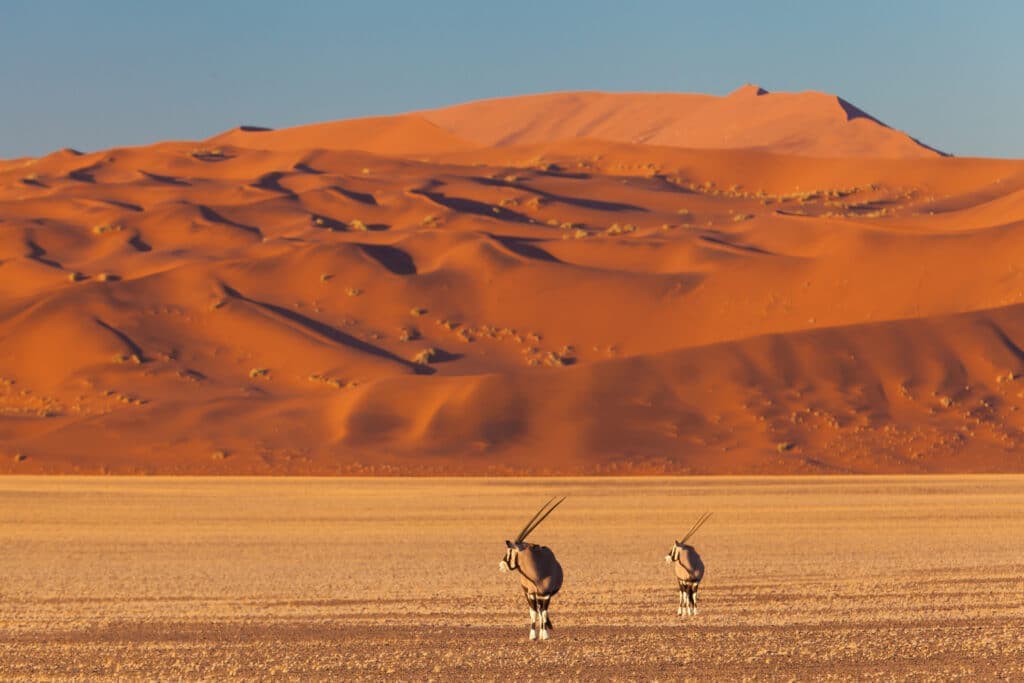
Towering in awe-inspiring ranks in the Namib-Naukluft National Park in the south-west of Namibia, the red dunes of Sossusvlei (a clay and salt pan) are a photographer’s dream. Famous for its extraordinary heights and vivid colours, this iconic destination for photographic safaris in Namibia offers breathtaking sunrise and sunset views when the dramatic play of light and shadow is just perfect for snapping pictures.
Visitors can also climb the dunes, with the most famous ones being Dune 45 (85 m/278 ft) and Big Daddy at a (literally) breathtaking 325 m/1,256 ft high. Nearby, Deadvlei presents another photogenic scene: the incredible whiteness of the clay pan is broken by the black skeletons of 900-year-old dead trees, all set off by the most vivid of blue skies.
Hot air balloon rides offer yet more unbelievable photographic opportunities. Please note that you have to buy a permit to enter the park, and access is limited to opening hours. Also note that the last few kilometres to Sossusvlei can only be done in a 4×4. There is, however, a parking area and a shuttle if you’re in an ordinary car. The wide range of accommodations in the area includes various options in the nearby village of Sesriem, camping options, as well as luxury lodges.
2. Namib Desert

The Namib Desert, considered by many to be the world’s oldest desert, is an otherworldly landscape with vast, rolling sand dunes and unique flora and fauna. Some of these unique species include the miraculous welwitschia plant, Hartmann’s mountain zebra, gemsbok, elephant shrew, golden mole, Karoo bustard, and Peringuey’s adder.
Photographers will enjoy capturing the surreal beauty of some of the highest dunes in the world. Activities like guided walks and 4×4 dune tours offer you opportunities to photograph the desert’s unique wildlife up close. The desert’s stark beauty makes it one of the most “Instagrammable” places in Namibia!
3. Epupa Falls
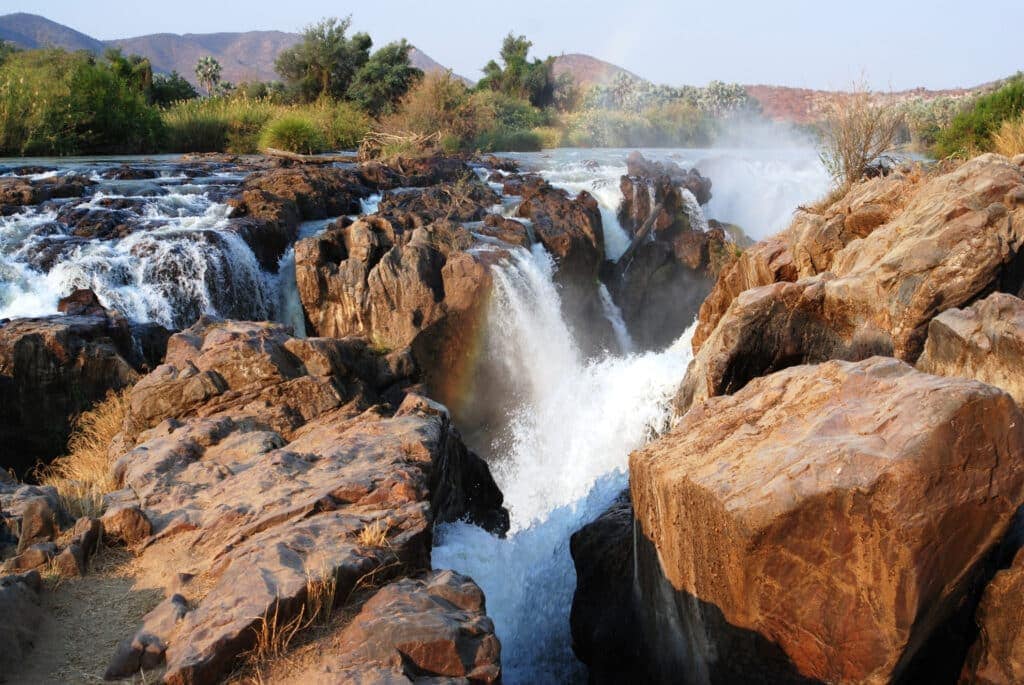
Situated on the border with Angola, Epupa Falls is a series of cascades where the Kunene River drops in dramatic fashion. The surrounding area is rich in baobab trees and lush vegetation, creating incredible contrasts of colour.
Photographers can capture the falls from various viewpoints, which highlight the awesome power of the water against the backdrop of the greenery and rocks. Activities on offer include immersive cultural visits to a Himba village – remember to ask permission before taking photographs. Hiking, guided birding excursions, trips to the falls, boating, rafting, and nature walks along the scenic Kunene river are also on offer. Both camping and lodge accommodations are available in the area.
4. Spitzkoppe
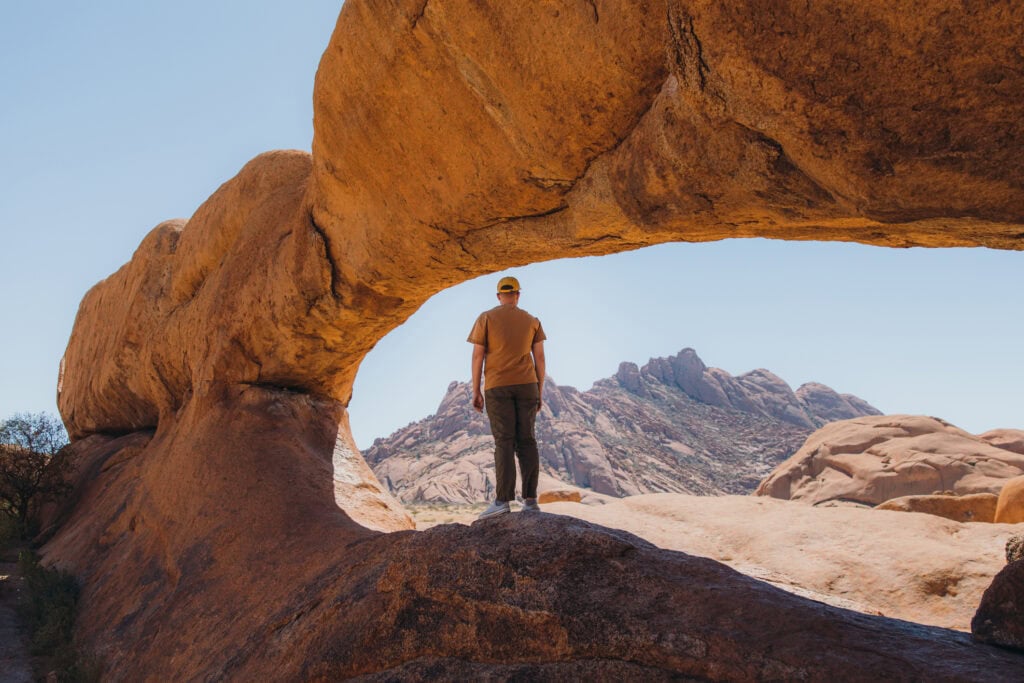
The Spitzkoppe, often referred to as the “Matterhorn of Namibia”, is a group of granite peaks in the Namib desert. The area is renowned for its stunning rock formations and ancient San rock paintings.
Here, photographers will be able to capture the lunar-like landscape during the golden morning and evening hours, when the rocks seem to glow with warm, earthy tones. Activities in the area include hiking, rock climbing, wildlife viewing, a variety of guided tours, and unrivalled stargazing.
Camping under the star-studded sky here offers exceptional opportunities for stunning night photography. The dramatic landscapes and rock formations make Spitzkoppe a photographer’s paradise – in fact, several films have been shot here over the years. Excellent lodge accommodations are available, too.
5. Fish River Canyon
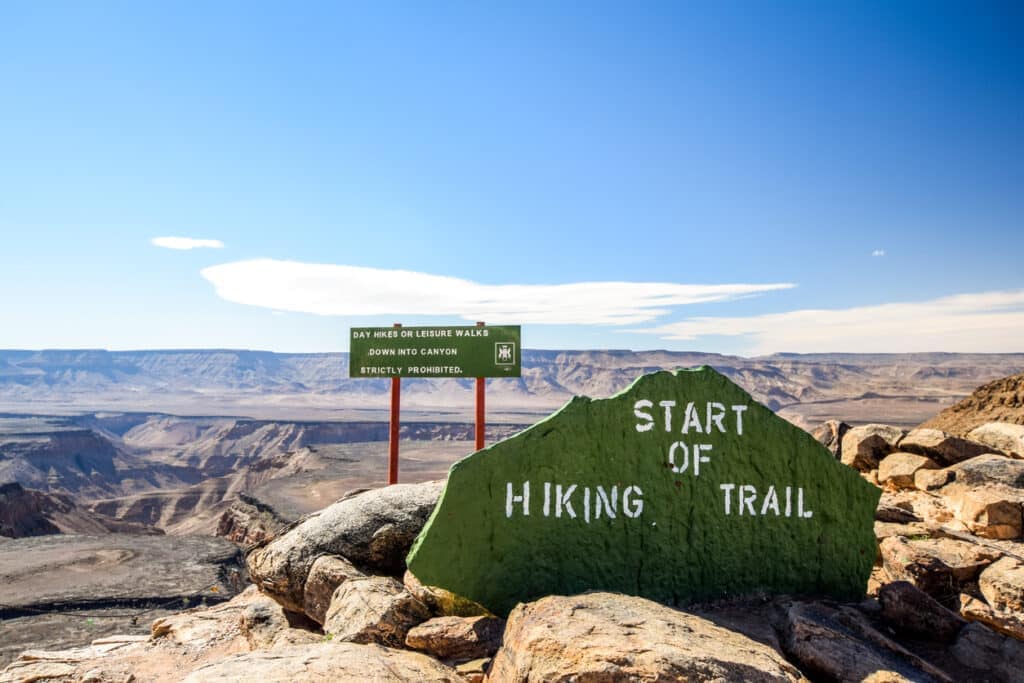
Located in the enormous Ai-Ais/Richtersveld Transfrontier Park, the Fish River Canyon is the second-largest canyon in the world. This geological marvel spans 160 km/99 mi long and up to 27 km/16 mi wide, offering dramatic panoramic views of the barren desert.
If you’re keen on landscape photography, you need to visit the canyon. There’s also plenty to do in the area, including tracking the area’s famous feral horses, visiting the extraordinary quiver tree forest, and learning about Mesosaurus fossils. You can also join guided hiking trails and canoe tours on the Orange River and visit Gondwana Canyon Park.
Hiking along the rim of the canyon or embarking on the multi-day Fish River Canyon Trail allows photographers unsurpassed photographic opportunities. Sunsets and sunrises here are particularly stunning, casting soft hues over the rugged terrain. Accommodations include various lodge options as well as camping sites in nearby Hobas.
6. Skeleton Coast
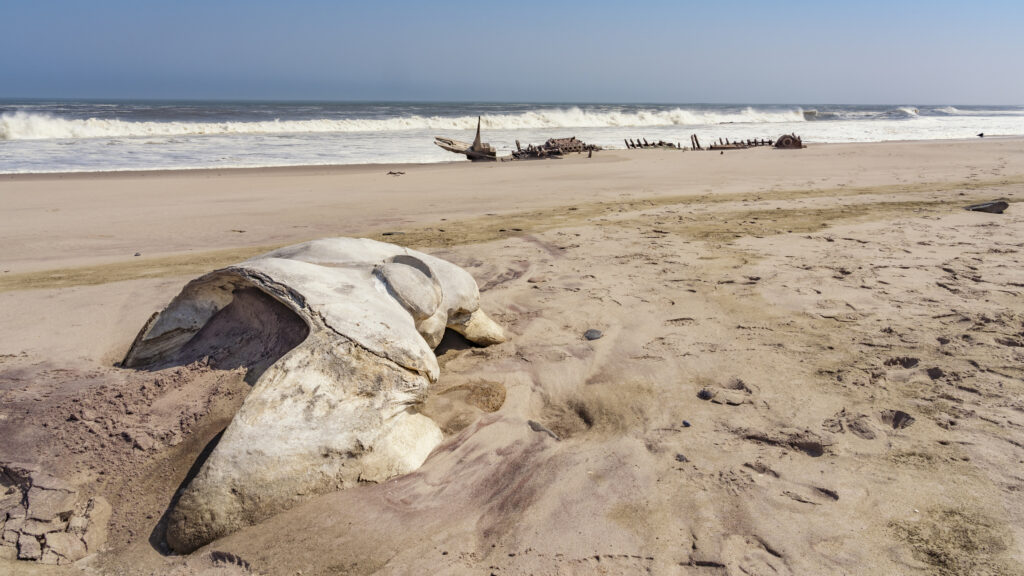
Also referred to as the world’s largest “ship cemetery”, the Skeleton Coast is a hostile but deeply fascinating environment. There are allegedly over 1,000 shipwrecks here, making it a hauntingly beautiful photographic destination. It’s also known for its dense fog that rolls in from the sea, quenching this area’s desert-adapted wildlife. These include colonies of Cape fur seals, seal-hunting lions, and desert-adapted elephants.
The numerous activities and attractions in the area include surfing, hiking, boating on the Kunene River, dune riding, fishing, 4×4 adventures, scenic flights, and visits to the Cape Cross seal colony. The juxtaposition of the Atlantic’s roaring waves against the desert backdrop creates a surreal and evocative atmosphere that photographers love to capture.
7. Etosha National Park
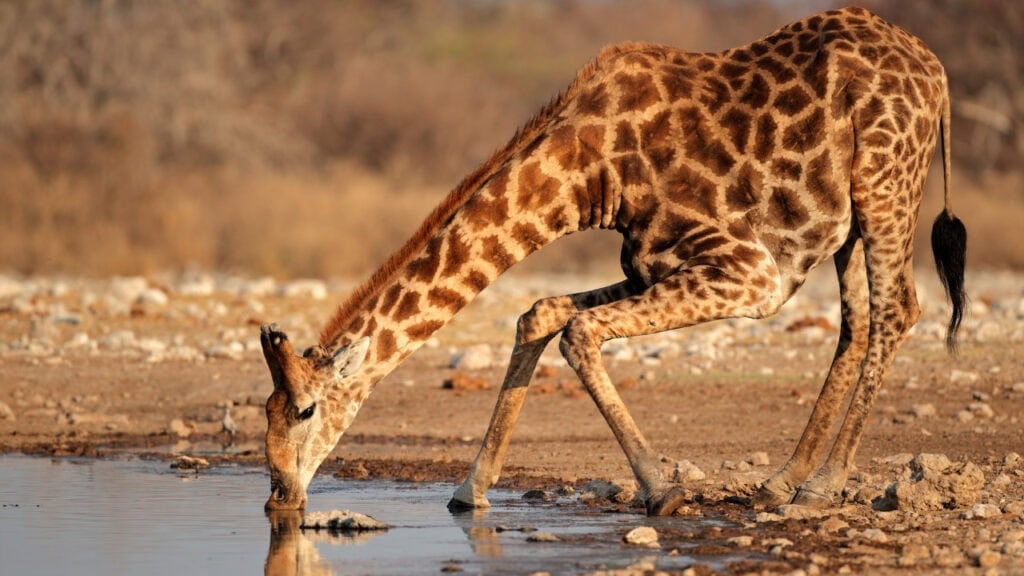
Covering 22,000 sq km/8,494 sq mi, Etosha National Park is one of the world’s premier wildlife and photographic destinations. Consisting of grasslands, sandveld, and woodland savannah – and distinguished by its gigantic salt pan – Etosha is home to numerous species, including four of the Big Five. This makes it ideal for a photographic safari.
You’ll be able to capture iconic images of African wildlife, including lions, leopards, endangered wild dogs, elephants, and rare black rhinos. The park’s more than 40 waterholes are absolute hotspots for wildlife viewing and photography, especially during the dry season. Meanwhile, nighttime safaris offer you the chance to photograph nocturnal creatures like bat-eared foxes.
The wide range of accommodation options available in Etosha include bush chalets, family chalets, luxury accommodation, and camping facilities in the park’s six main camps, as well as luxury lodges outside the park.
8. Caprivi Strip
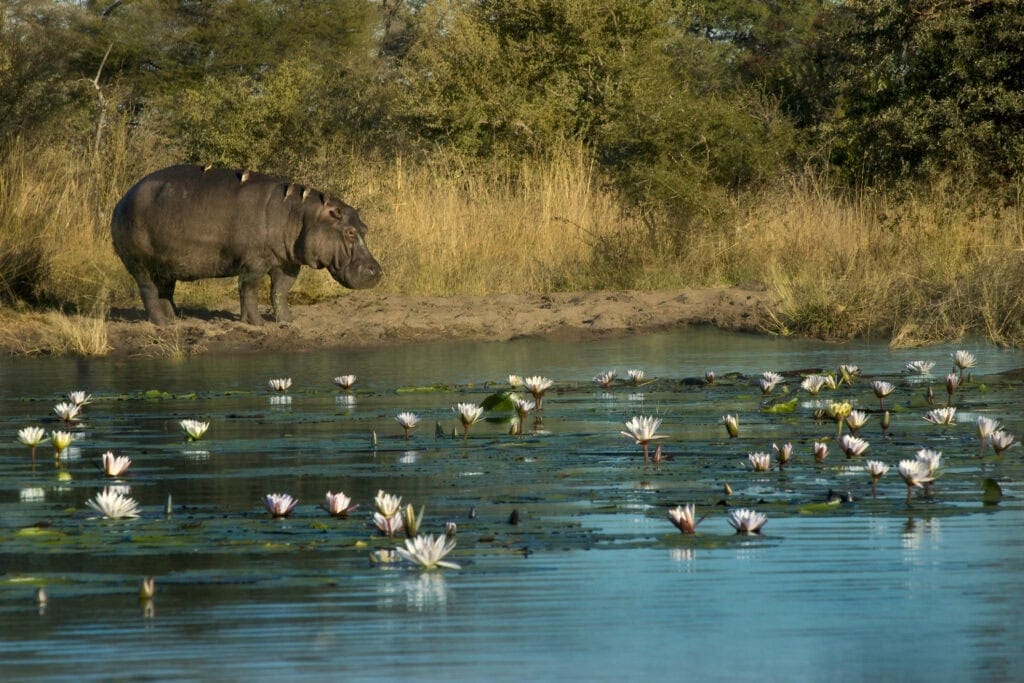
The lush Caprivi Strip forms a stark contrast to the arid desert landscapes elsewhere in Namibia. Whereas much of Namibia is arid, the Caprivi Strip is a water-rich haven for wildlife that borders Botswana’s iconic Okavango Delta and Chobe National Park.
It’s not only a prime destination for wildlife safaris, but is a much sought-after landscape photography destination. Ranging from lush wetlands and riverine forests to woodlands and savannahs, the Caprivi is home to an array of wildlife, including elephants, hippos, crocodiles, and various bird species.
Being intersected by the Kavango, Linyanti, and Zambezi rivers, photographers have unmatched chances to photograph aquatic and bird life here. With its rivers and floodplains, it’s ideal for boat safaris, birdwatching, and rewarding cultural interactions with the local people. A wide variety of accommodation options are on offer.
9. Swakopmund
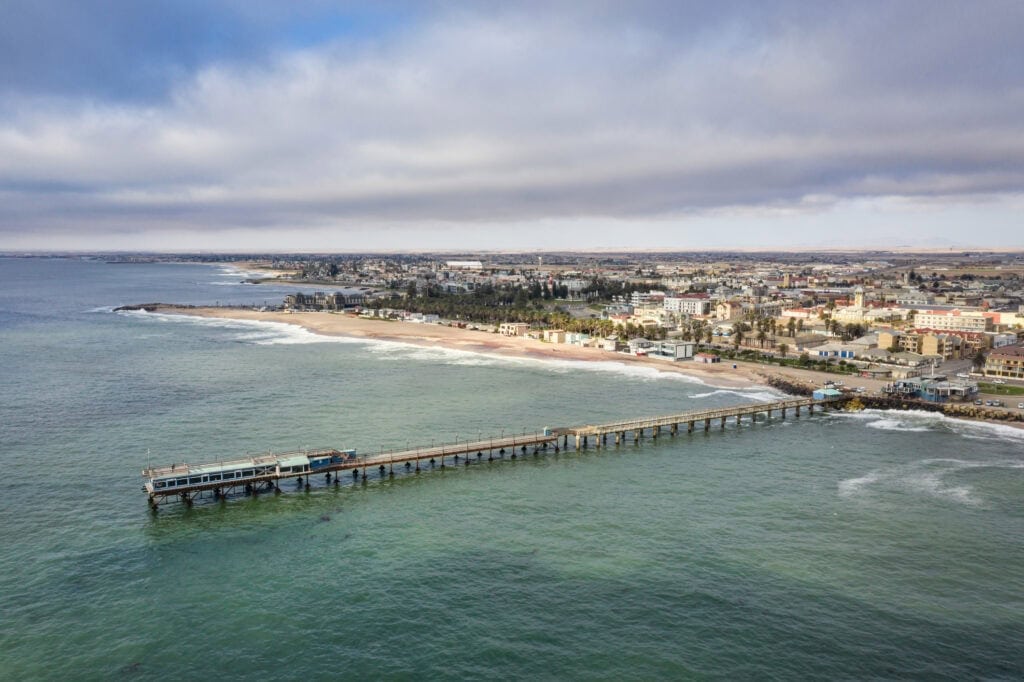
Set between the ocean and the Namib Desert, the charming coastal town of Swakopmund is one of the most popular tourist destinations in Namibia. Photographers and history buffs, in particular, love its fascinating colonial architecture and many historical sights.
Its range of varied accommodations and numerous excellent guest houses add to this appeal. With its excellent restaurants and beer gardens, Swakopmund is the perfect base for exploring the coast. Local tour operators offer a host of activities, including boating, harbour visits, kayaking, birdwatching, sandboarding, quad biking, 4×4 driving, the famous Welwitschia drive, and skydiving.
Desert walks allow you to get up close and personal with the unique fauna and flora of the Namib desert. You can also go on “fat tyre bike” excursions to cover more ground.
10. Twyfelfontein
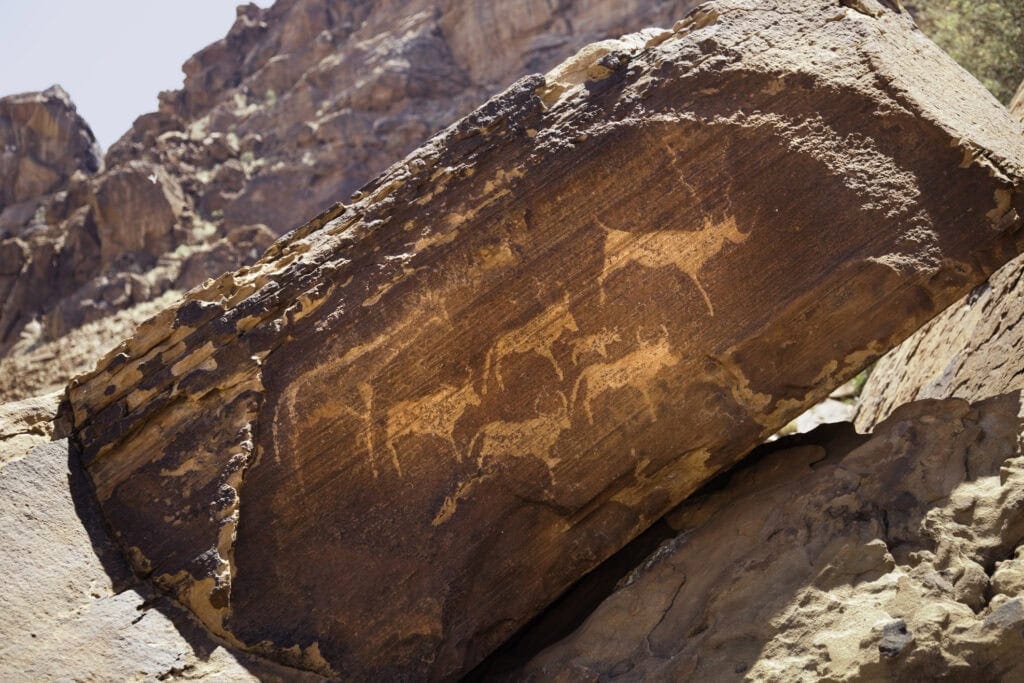
Twyfelfontein is a UNESCO World Heritage site famed for its extensive collection of ancient rock engravings and rock paintings. Set in the heart of Damaraland, Twyfelfontein is a site of immense cultural significance, offering a glimpse into the rich history of the region and its people.
There are more than 5,000 engravings here, as well as hundreds of rock paintings. Many animals are depicted in the art, including black rhinos and elephants. There are also some fine geometric engravings, as well as depictions of people hunting and dancing. It’s a must-visit destination for anyone interested in archaeology, rock art, Namibian history, and photography. Another famous ancient Namibian rock painting, the famous “White Lady” of the Brandberg, who’s seemingly not a woman after all, is an easy day trip away from Twyfelfontein.
Various tented camps, adventure camps, camping options, hotels, and lodges offer a wide range of accommodations in the area. Be sure to join a guided tour of the rock art sites to enhance your photographic experience. Namibia’s many landscapes, from its haunting Skeleton Coast to its verdant Caprivi Strip, have already established the country as one of the most renowned photographic destinations on the planet.
As you immerse yourself in the eerie ambience of the Namib Desert or marvel at the vastness of the Fish River Canyon, it becomes clear that a Namibian photographic holiday is about more than just pictures – it’s an extraordinarily rewarding and immersive experience into one of the world’s most amazing safari destinations.
Author: Vihann Van Wyk
Published:
Last Update:
Part of the Namibia Safaris Safari & African Photo Safaris Collections